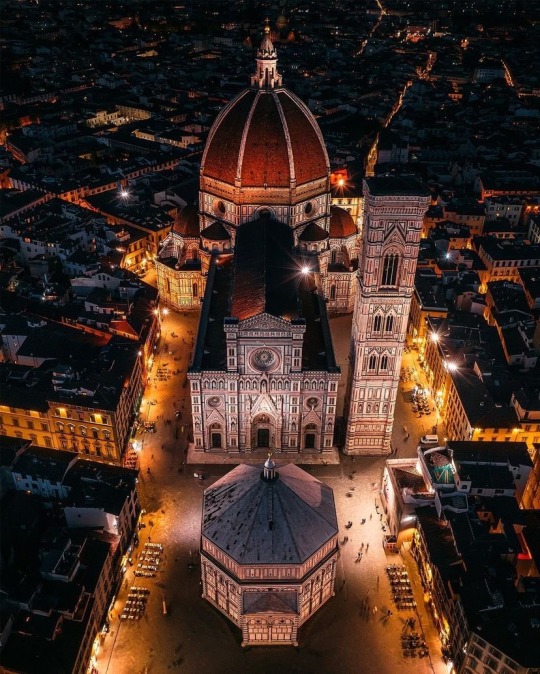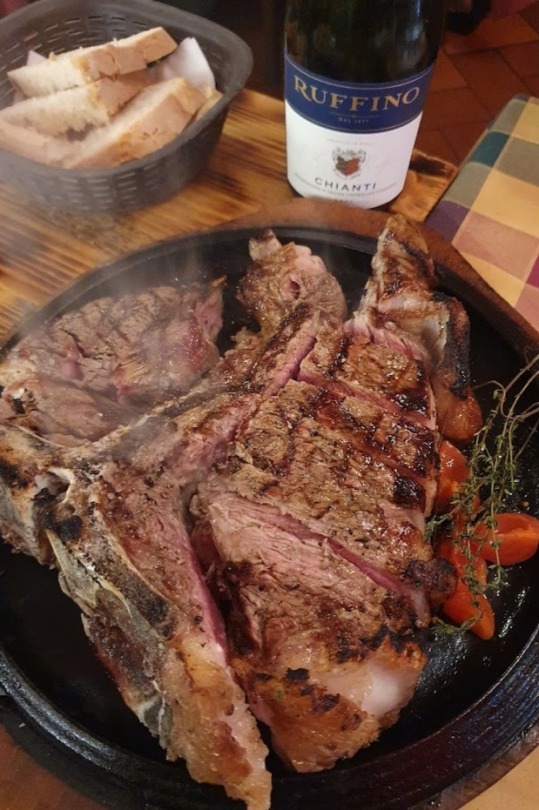#firenze bella
Explore tagged Tumblr posts
Text

Romantic Florence
#photography#analog#photographers on tumblr#la vie en rose#original photographers#analog photography#photooftheday#la vie est belle#original photography blog#photography on tumblr#la vie boheme#la vita è bella#la dolce vita#indie#retro#girly#vintage#bohemian#boho#bohostyle#bohochic#aesthetic#florence#firenze#italy#italia#music#dance#romantic#october
67 notes
·
View notes
Text
Sei la più bella del mondo...come te nessuna mai...florentia la bella

Florence, Italy 🇮🇹
5K notes
·
View notes
Text
La torre degli Amidei
Torri e amori, delitti e potere a Firenze nel XIII secolo di Salvina Pizzuoli La torre degli Amidei, particolare della facciata In Por Santa Maria si fa notare per la sua altezza sopra le case e la fiera eleganza: è la torre degli Amidei, potente famiglia fiorentina i cui membri erano Capo di Ponte, come lo era la loro torre a difesa della città dalla parte dell’Arno e da una porta, Por…

View On WordPress
#Capo di Ponte#curiosità#delitti#delitti e potere a Firenze nel XIII secolo#discover Florence#Firenze XIII secolo#Giano della Bella#History of Tuscany#micro history of Tuscany#Ordinamenti di giustizia#Ordinamenti di giustizia Giano della Bella#potere#Salvina Pizzuoli#scapotizzature#storia e microstoria#torre degli Amidei#Torri#Torri e amori
0 notes
Text








Bella la Biennale,ma vogliamo parlare della grotta di Palazzo Corsini?…
Firenze 🖤
Biennale Internazionale dell’Antiquariato .
Ho fatto una foto .
37 notes
·
View notes
Text
Ciao Bella Firenze


#Via degli Strozzi#Piazza della Repubblica#Old City#Republic Square#City Square#Strozzi Street#Ponte Santa Trinita#Bicycle#Street Scene#Cityscape#Bridge#Sculpture#Symbol of Summer#Marble#Statue#Renaissance#Architecture#Florence#Tuscany#Italy
51 notes
·
View notes
Text
Quanto mi fa schifo Milano, come cazzo fate a dire che è una bella città non so.
Napoli é bella, Venezia, Firenze, Roma…ma Milano?
Dai.
25 notes
·
View notes
Text
Tappa 5 Bivigliano - Firenze
- la cosa più bella di oggi nel mangiare è stata la mela. Diomio quanto mi mancano frutta e verdura
- non ero mai stato a Firenze e la amo nella sua architettura e la odio nei troppi turisti che mi fanno mancare l’aria
- è dalle 1 che sto seduto su una panchina ad aspettare il treno che è alle 20 perché non conosco nessuno e non so più cosa fare
Solo felice. Questo conta
25 notes
·
View notes
Text
Lunedì sera...
Ed è un po' freddino,in effetti,ma a Febbraio non possiamo aspettarci le temperature estive..
E comunque sono terribilmente felice! Perché ho la pancia piena di buon cibo e mi godo Firenze by night.
La vita è bella! (ノ◕ヮ◕)ノ*.✧


#cucinatoscana
#buonvino
#soprattuttoilvino🍷
#byronnightisback
32 notes
·
View notes
Text
love letters
Part of the ongoing series for this month
Here and read on ao3

My ever sweet lady,
It gets so lonesome here without your laughter. Having you here would be the light needed to shine through these ghostly halls at Harrenhal. Still, I would never want to risk your safety in this war as you are too precious to me. Any victory and ground that we take brings me one day closer to you. I will see you again as the gods have intended.
Forever yours cherished,
Aemond Targaryen
Prince Regent of the Seven Kingdoms

Mia bella,
The villa is lonesome without you. Birds sing and flowers bloom, but the beauty of it all never compared to you. Claudia and Leonardo tease that you will be back within the fortnight, but I wish it would be sooner. How I wish you were back in my arms, or to be awakened by your gentle kisses when you return back home.
Forever your tesoro,
Ezio Auditore da Firenze

Dearest light of my life,
Your travels to Gresit have not gone unnoticed nor have they gone unappreciated. Every day, new arrivals come to build a new life for themselves. Knowledge flows from the Belmont Hold. Though your laughter and presence leaves us with a hole that only you can replenish. Trevor, Sypha and Greta pass by your chambers every day, the wanting glances lasting seconds longer every time. Our little Belmont still passes by to replace the flowers they think you would like. And I miss you fervently as well. How it felt to be in your arms on quieter days and the gentleness you show me.
Sincerely,
A cursed soul seeking redemption with you,
Adrian Tepes

Beloved,
Though I have constantly had to chase Altair from stealing parchment for his letters to you, I do not blame him. You have your duties and responsibilities, but always come back to the ones who love you. I wish to see you again, and very soon too.
If it’s all the same, I miss you terribly as well. Altair, Maria and the children do as well. The young boys still vie for your songs and stories at night.
Forever yours,
Malik Al-Sayf
Head of the Bureau
#castlevania#alucard farenheit tepes#assassin’s creed#alucard adrian tepes#adrian tepes#adrian tepes x reader#my writing#valentine’s day#castlevania x reader#assassin’s creed x reader#house of the dragon#aemond targaryen#malik al sayf#altmalmar#ezio x reader#ezio auditore x reader#Malik x reader#aemond targaryen x y/n#ezio auditore da firenze#aemond x reader#castlevania alucard x reader
153 notes
·
View notes
Text

che bella Firenze le sere d'estate le luci del centro le nostre risate
9 notes
·
View notes
Text

Just Italy
#photography#analog#photographers on tumblr#la vie en rose#original photographers#analog photography#photooftheday#la vie est belle#original photography blog#photography on tumblr#la vita è bella#la vie boheme#la dolce vita#indie#retro#girly#vintage#bohemian#boho#bohostyle#bohochic#aesthetic#italy#italia#florence#firenze#architecture#sunny#september#buildings
49 notes
·
View notes
Text
Date una mano

La più bella impresa, per un umano, è aiutare gli altri, con quello che può, con quello che ha.
Sofocle, [Οἰδίπoυς τύραννoς, Oidípūs týrannos. 430-420 a.C.], Edipo re, in Eschilo-Sofocle-Euripide, Tutte le tragedie, Firenze - Milano, Giunti / Bompiani, 2018 [Trad. A. Tonelli]
5 notes
·
View notes
Text

Firenze vista da Fiesole: con la luce del tramonto è ancora più bella!
Ringrazio Rufus Wainwright che mi ha portato in questo bellissimo posto.
10 notes
·
View notes
Text

buonasera sono a firenze ho mangiato i tortellacci ripieni di parate con tartufo e porcini bevuto una bottiglia di chianti fatto la scopata migliore della mia vita e ora skincare 💗💗💗💗💗 la vita è bella
21 notes
·
View notes
Text
Simonetta Cattaneo Vespucci the Venus who lived in Florence
Simonetta Cattaneo Vespucci la Venus que vivió en Florencia

Detail of The Virgin and Child with Saint John and an Angel (1490) / Detalle de La Virgen y el Niño con San Juan y un ángel (1490) Sandro Botticelli
(English / Español / Italiano)
The 'beautiful Simonetta', the 'peerless one': these are the two nicknames by which one of the most famous noblewomen of the Florentine Renaissance, Simonetta Vespucci, born Cattaneo (Genoa or Portovenere, 1453 - Florence, 1476), entered into legend.
Considered a woman of incomparable beauty, the object of desire of many men in mid-15th-century Florence, a member of one of the oldest families of the Genoese nobility (the Cattaneo), married at only sixteen to the banker Marco Vespucci (a relative of the more famous Amerigo, the navigator who gave his name to America), she died very young (at only twenty-three, probably of plague or tuberculosis) and was associated with the names of many artists of the time, for whom she would have posed.
Her beauty was the source of inspiration for Sandro Botticelli in the creation of some of the most important paintings ever created. The painter could not bear the loss of his muse, and lived the rest of his life obsessed with her beauty, portraying her in many of his works. Among them is the painting "Venus and Mars", in which the gods are represented by Simonetta and Botticelli himself.
Almost nine years after her death, Botticelli completed "The Birth of Venus", his greatest homage to Simonetta and a painting which, over the centuries, would become his most representative work.
The painter, who never married, died in 1510 and was buried at the foot of Simonetta's tomb in the church of Ognissanti in Florence, as he had expressed in his last will. Perhaps this was the only way he could spend eternity with the most beautiful woman of the Renaissance.
-----------------------------------------------------------------------------
La "bella Simonetta", la "sin par": estos son los dos apodos con los que entró en la leyenda una de las nobles más famosas del Renacimiento florentino, Simonetta Vespucci, nacida Cattaneo (Génova o Portovenere, 1453 - Florencia, 1476).
Considerada una mujer de belleza incomparable, objeto de deseo de muchos hombres en la Florencia de mediados del siglo XV, miembro de una de las familias más antiguas de la nobleza genovesa (los Cattaneo), casada con sólo dieciséis años con el banquero Marco Vespucci (pariente del más famoso Amerigo, el navegante que dio su nombre a América), murió muy joven (con sólo veintitrés años, probablemente de peste o tuberculosis) y estuvo asociada a los nombres de muchos artistas de la época, para los que habría posado.
Su belleza fue la fuente de inspiración de Sandro Botticelli en la creación de algunas de las pinturas más importantes jamás creadas. El pintor no pudo soportar la pérdida de su musa, y vivió el resto de su vida obsesionado con su belleza, retratándola en muchas de sus obras . Entre ellas destaca el cuadro "Venus y Marte", en el que los dioses son representados por Simonetta y el propio Botticelli.
Casi nueve años después de su muerte, Botticelli finalizó “El nacimiento de Venus”, su mayor homenaje a Simonetta y cuadro que, con el paso de los siglos se convertiría en su obra más representativa.
El pintor, que nunca se casó, falleció en 1510 y fue enterrado a los pies de la tumba de Simonetta, en la Iglesia de Ognissanti en Florencia, tal y como había expresado en su última voluntad. Quizá fue la única forma que encontró para poder pasar la eternidad junto a la mujer más bella del Renacimiento.
------------------------------------------------------------------------------
La “bella Simonetta”, la “senza pari”: sono questi i due soprannomi con cui è entrata nella leggenda una delle più celebri nobildonne del Rinascimento fiorentino, Simonetta Vespucci, nata Cattaneo (Genova o Portovenere, 1453 - Firenze, 1476).
Considerata una donna di incomparabile bellezza, oggetto del desiderio di molti uomini nella Firenze di metà Quattrocento, membro di una delle più antiche famiglie della nobiltà genovese (i Cattaneo), sposata a soli sedici anni con il banchiere Marco Vespucci (parente del più celebre Amerigo, il navigatore che diede il nome all’America), morì giovanissima (a soli ventitré anni, probabilmente di peste o tubercolosi) e fu associata ai nomi di molti artisti dell’epoca, per i quali avrebbe posato.
La sua bellezza fu fonte di ispirazione per Sandro Botticelli nella creazione di alcuni dei più importanti dipinti mai realizzati. Il pittore non riuscì a sopportare la perdita della sua musa e visse il resto della sua vita ossessionato dalla sua bellezza, ritraendola in molte delle sue opere. Tra queste, il dipinto "Venere e Marte", in cui gli dei sono rappresentati da Simonetta e dallo stesso Botticelli.
Quasi nove anni dopo la sua morte, Botticelli completò "La nascita di Venere", il suo più grande omaggio a Simonetta e un dipinto che, nel corso dei secoli, sarebbe diventato la sua opera più rappresentativa.
Il pittore, che non si sposò mai, morì nel 1510 e fu sepolto ai piedi della tomba di Simonetta nella chiesa di Ognissanti a Firenze, come aveva espresso nelle sue ultime volontà. Forse questo era l'unico modo per trascorrere l'eternità con la donna più bella del Rinascimento.
#renacimiento#renaissance#rinascimento#il quattrocento#15th century#s.XV#simonetta cattaneo vespucci#botticelli
4 notes
·
View notes
